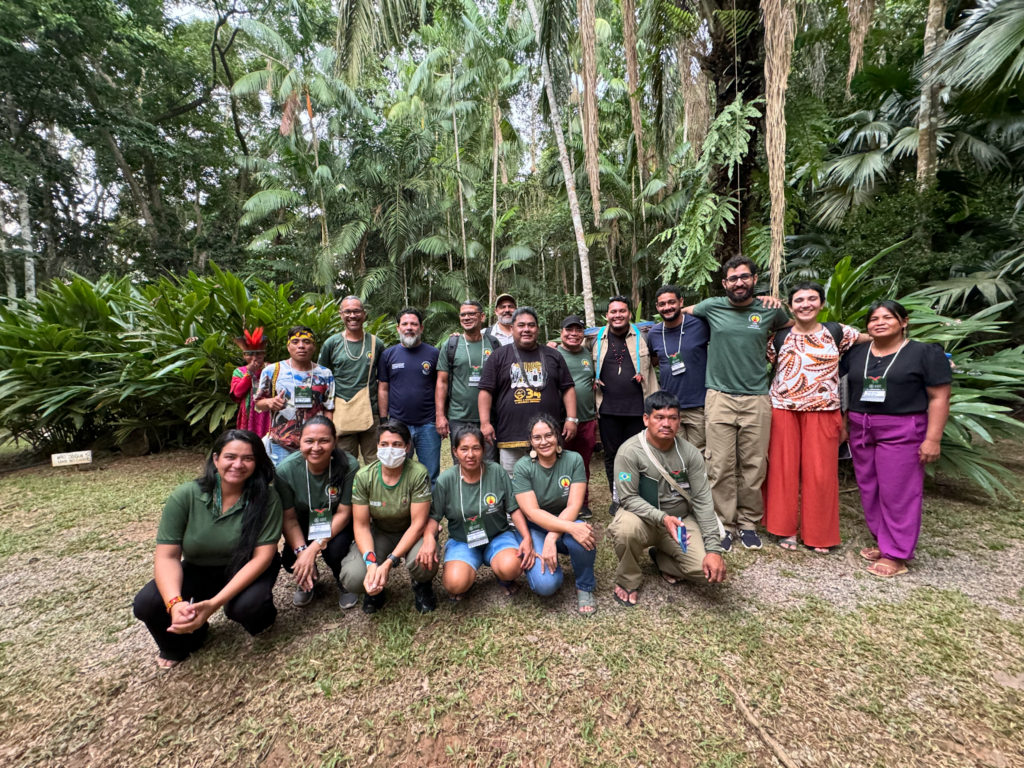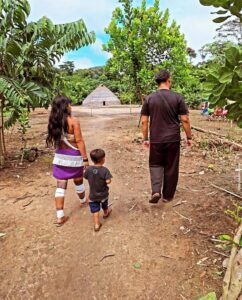Meeting coordinated by the Isolated and Recently Contacted Indigenous Peoples Board (GPIIRC) discussed initiatives to protect isolated indigenous peoples on the Brazil-Peru border
Between January 29th and 31st, the Coordinating Body of Indigenous Organisations of the Brazilian Amazon (Coiab), through the Isolated and Recently Contacted Indigenous Peoples Board (GPIIRC), organised the meeting Alliances for the protection of territorial corridors for isolated indigenous peoples on the Brazil-Peru border. The aim of the event was to encourage and strengthen the roles of different actors engaged in the protection of isolated peoples, such as indigenous movements and communities, civil society partners and the Brazilian state, in order to ensure more effective action in cross-border regions.
The meeting took place in Rio Branco (AC) and was held in partnership with the Pro-Indigenous Commission of Acre (CPI-Acre), the Indigenous Work Centre (CTI), the Observatory for the Human Rights of Isolated and Recently Contacted Indigenous Peoples (Opi) and Rainforest Foundation Norway (RFN), was supported by the Bezos Earth Fund, and had the participation of different indigenous organisations from the Upper Purus River (Acre and Amazonas), Juruá Valley (Acre and Amazonas) and Javari Valley (Amazonas) regions, all areas where indigenous peoples move between territories in both countries. Coiab is looking for strategies to coordinate the advocacy of indigenous and indigenist organisations with the Brazilian state in order to ensure greater power for demanding indigenous rights for isolated peoples and the territories in which they live. According to Luiz Fernandes, Coiab's manager for isolated and recently contacted peoples (GPIIRC), this is a positive agenda for the protection policy governance, bringing countries together to deliberate on a binational agenda, understanding that strategic instruments for guaranteeing rights in the cross-border sphere are different in each country. "For the relatives* there is no border, the territory is indigenous whether on the Brazilian or the Peruvian sides, so we seek to strengthen indigenous initiatives to protect these peoples, empowering relatives who are already doing this work within their territories," says Fernandes.
Brazil and Peru Cross-Border Corridors Meeting (Photo: Isaka Huni Kui. Acre/2024)
The concept of cross-border corridors promotes the idea of a joint space for dialogue and organisation to guarantee political impact on the issue on both sides of the Brazil-Peru border. Coiab's general coordinator, Toya Manchineri, commented on the importance of this first meeting, given the challenges of non-demarcated indigenous lands. "We are holding this first meeting to strengthen the actions of indigenous organisations to protect their relatives in isolation. We want to leave this meeting with a well defined national agenda and a proposal for an international agenda," Toya emphasised.
According to Conrado Rodrigo Octavio, Rainforest Foundation Norway has been supporting this agenda for many years via partner organisations on both sides of the border. "We believe that this type of coordination makes a decisive contribution to protecting forests and defending the rights of their peoples, while also helping to strengthen state policies in both Peru and Brazil."
A threat to isolated and recently contacted indigenous peoples
Recently contacted Indigenous peoples and those in voluntary isolation are particularly threatened by the approval of Law 14.701 by the Brazilian National Congress. The Temporal Framework Law , also known as the Genocide Law, established the theory that only the Indigenous peoples who are able to prove their presence on claimed land on the date Brazil's Federal Constitution came into effect have the right to land demarcation. The law violates the very concept of isolation, as indigenous groups in this condition would have to leave isolation in order to prove their territorial rights to the Brazilian state. Indigenous organisations are protesting against the thesis and are seeking recognition of indigenous constitutional rights in an ADI (Direct Action of Unconstitutionality) filed with the Federal Supreme Court.
According to data from the Sirad-I Bulletin, between May and August 2023, 300.98 hectares of forests were degraded inside Indigenous Lands (TIs) with isolated peoples in the Brazilian Amazon, which concentrates the world's largest number of isolated groups. There are fears that these figures will worsen as a result of the approval of the Temporal Framework.
Press contactAlana Manchineri, Coiab communications - (92) 98587-9653 Robson Baré, Coiab communications - (41) 99842-2150




